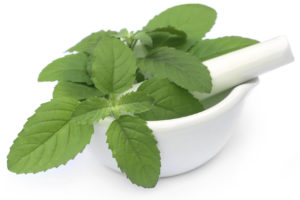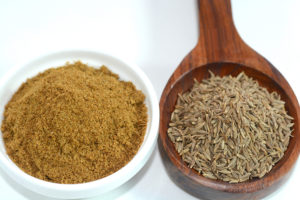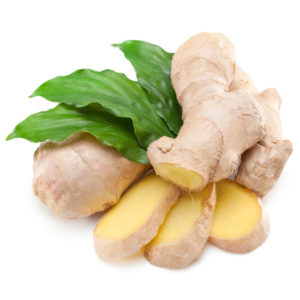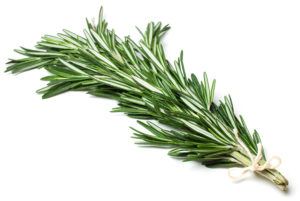Knack to Know
Concepts About Cooking Components
Aniseed
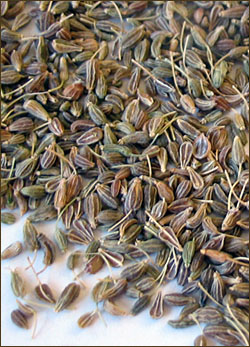 The seed of a flowering plant that has its origins in Eastern Mediterranean region and Southwest Asia is used to flavour various dishes. The flavour of the seeds is similar to fennel, liquorice and star anise. It is popularly used to add flavour to dishes of Western cuisine and different drinks.
The seed of a flowering plant that has its origins in Eastern Mediterranean region and Southwest Asia is used to flavour various dishes. The flavour of the seeds is similar to fennel, liquorice and star anise. It is popularly used to add flavour to dishes of Western cuisine and different drinks.
Some of the other uses of Aniseed include:
- It has medicinal use.
- This spice is a great treatment for flatulence.
- It is also helps relieve menstrual cramps and colic.
Fennel (Mouri/Saunf)
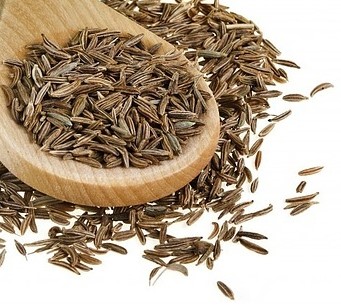 Fennel is a perennial herb that is used for flavouring various dishes. Seeds, bulbs and foliage is of this herb can be used in various dishes. It is highly aromatic and flavourful. The bulbs, foliage as well as the seeds are used in various cuisines across the world. The yellow flowers of this herbaceous plant also known as fennel ‘pollen’ are the most potent in terms of flavour and quite expensive as well. The seeds can be used in both dried and fresh form. The bulb on the other hand is can be used as a vegetable that can be grilled, braised, stewed, sautéed or even eaten raw. Leaves of fennel can be used to garnish salads or add flavour into soups, salads and other dishes. The fennel seeds can be used as an after meal mouth freshener in two forms – sugar coated or uncoated form.
Fennel is a perennial herb that is used for flavouring various dishes. Seeds, bulbs and foliage is of this herb can be used in various dishes. It is highly aromatic and flavourful. The bulbs, foliage as well as the seeds are used in various cuisines across the world. The yellow flowers of this herbaceous plant also known as fennel ‘pollen’ are the most potent in terms of flavour and quite expensive as well. The seeds can be used in both dried and fresh form. The bulb on the other hand is can be used as a vegetable that can be grilled, braised, stewed, sautéed or even eaten raw. Leaves of fennel can be used to garnish salads or add flavour into soups, salads and other dishes. The fennel seeds can be used as an after meal mouth freshener in two forms – sugar coated or uncoated form.
Asafoetida (Hing)
 It is the resin or gum that is released by the roots and stem of several species of a perennial herb called Ferula. The colour is usually greyish white when it is exuded but turns to a dark amber colour as it dries up. It has an acrid smell but lends a flavour similar to that of leeks to the cooked dish in which it is used. It has various uses:
It is the resin or gum that is released by the roots and stem of several species of a perennial herb called Ferula. The colour is usually greyish white when it is exuded but turns to a dark amber colour as it dries up. It has an acrid smell but lends a flavour similar to that of leeks to the cooked dish in which it is used. It has various uses:
- As a digestive aid
- As a condiment
- It is also helpful in pickling
It is quite popular in Indian vegetarian dishes like lentil/dals and other dishes. Due to its hardness, grating becomes difficult so it is crushed for usage. It is usually used to temper the food. It also has various medicinal uses. Here are some of them:
- As a treatment for flatulence
- Helps fight influenza
- Treatment for asthma and bronchitis
Bay Leaf (Tej Pata)
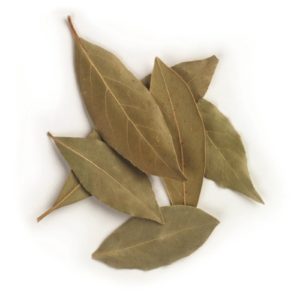 Bay leaves are aromatic leaves of various plants that lend a great flavour to different dishes. The leaves fragrance is more noticeable than the taste. It is used in various cuisines like Indian, Filipino, European and many more. The various types of bay leaves are:
Bay leaves are aromatic leaves of various plants that lend a great flavour to different dishes. The leaves fragrance is more noticeable than the taste. It is used in various cuisines like Indian, Filipino, European and many more. The various types of bay leaves are:
- Bay laurel can be used fresh or dried to flavour different dishes. The leaves should be removed from the dish before consumption.
- California bay leaf
- Indonesian bay leaf
- Indian bay leaf
- Mexican bay leaf
- West Indian bay leaf
The bay leaf also has other functions like repelling insects and many more.
Black Pepper (Golmorich/Kali Mirch)
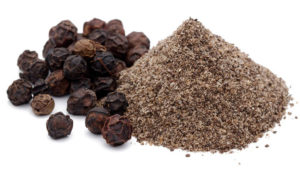 The plant Pepper is a kind of flowering vine that is cultivated for its fruit. The fruit can be used in three ways:
The plant Pepper is a kind of flowering vine that is cultivated for its fruit. The fruit can be used in three ways:
- Black Pepper – It is the unripe fruit that has been cooked and dried
- Green Pepper – It is the unripe fruit that has been dried
- White Pepper – It is the ripe fruit seeds
Black pepper originated from South India and is grown in tropical regions. This spice can be used as a whole spice as well as in the ground powder form. It can used to season dishes along with salt.
The spiciness of black pepper can be attributed to a substance called piperine that is not to be confused with capsaicin that is found in chilli peppers. The aroma and flavour of pepper can be easily lost through evaporation so be sure to keep it stored in an air-lock container.
.
Cinnamon (Dalchini)
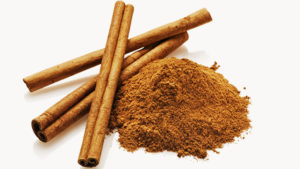 It is a popular spice derived from the inner bark of trees belonging to the genus Cinnamomum. The name of spice can be taken as a reference to the mid-brown colour of the spice. It can be used as whole or as a powder for flavouring various dishes.
It is a popular spice derived from the inner bark of trees belonging to the genus Cinnamomum. The name of spice can be taken as a reference to the mid-brown colour of the spice. It can be used as whole or as a powder for flavouring various dishes.
Cinnamon is a versatile spice so it can be used to flavour both sweet and savoury dishes. This spice is majorly used in cooking delicious dishes and used as a condiment or a flavouring material. It is also known to flavour alcoholic beverages and other beverages like egg-nog.
Cinnamon is also known to aid in the treatment of muscle spasms, diarrhoea, vomiting, infections, loss of appetite, the common cold and erectile dysfunction (ED). It also has the power to lower blood sugar for people with type 1 or type 2 diabetes.
Cloves (Lobongo/Loung)
 Cloves are basically the flower buds of a tree belonging to the family Myrtaceae, Syzygium aromaticum. The buds are quite aromatic and can be used to flavour to curries, meats, marinades and fruits like apples, rhubarb or pears. . It also is well-known to lend flavour to beverages as well.
Cloves are basically the flower buds of a tree belonging to the family Myrtaceae, Syzygium aromaticum. The buds are quite aromatic and can be used to flavour to curries, meats, marinades and fruits like apples, rhubarb or pears. . It also is well-known to lend flavour to beverages as well.
It is native to Maluku Islands of Malaysia, but can be found in Sri Lanka, Bangladesh, India, Indonesia, Madagascar, Tanzania, Zanzibar and Pakistan.
Some of the other uses of this spice include:
- Used in Indonesia in a cigarette called kretek
- As an ant repellent
- Used as a fragrance pomander in combination with orange
- Used in Ayurveda, Chinese medicine as well as Western Herbalism
- In dentistry it is often used as a painkiller for toothache
- Used as a carminative to improve peristalsis
Coriander (Dhone/Dhania)
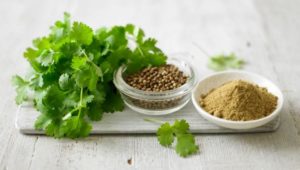 Coriander is an annual herb belonging to the family Apiaceae. The best part about this herb is that all the parts are edible from the leaves to the dried seeds.
Coriander is an annual herb belonging to the family Apiaceae. The best part about this herb is that all the parts are edible from the leaves to the dried seeds.
Leaves have a citrus overtone and are used more popularly as a garnish but can also be a main part of various dishes like Coriander chicken. It can also feature in salads and chutneys.
Coriander seeds on the other hand are the dried fruits that can be used as a whole spice or in powder form. The crushed seeds are said to have a nutty, spicy and orange flavour. It is commonly used in garam masala and curries. Whole seeds when roasted can also be used as a mouth freshener.
It is also helpful in:
- Lowering Blood Sugar
- Easing Digestive Discomfort.
- Decreasing Blood Pressure.
- Fighting Food Poisoning.
- Improving Cholesterol Levels.
- Helpful Urinary Tract Infections.
- Supporting Healthy Menstrual Function.
- Prevention of Neurological Inflammation & Disease
Basil (Tulsi)
It is a well-known culinary herb that has been cultivated in India for ages and plays a major role in Italian cuisine as well as Southeast Asian cuisines. Various species of Basil can be found. The one used in Italian cuisine is the sweet basil while in Southeast Asian cuisines the basil used is known as the Thai Basil or Lemon Basil. Another variety called the Holy Basil or Tulsi is also available. Using Fresh Basil leaves at the end of the cook is the best way to enhance flavour of any dish because cooking and drying destroys the flavour of basil. Seeds of the basil are usually soaked in water which makes them gelatinous, and then it is used in Asian desserts and drinks. It is also known to have medicinal and therapeutic properties. It is used in:
- Ayurveda
- Traditional Chinese medicine
Cumin (Jeera)
Cumin is a type of flowering plant which belongs to the family Apiaceae. It is native to regions ranging from the east Mediterranean to South Asia.
The seeds are the part of the plant that is used as spice after drying. It can be used in both powdered form or as a whole spice. The cumin is also known as Jeera, has a distinctive flavour and aroma. It adds an earthy flavour to the dish and is also used in pickles and pastries.
It is definitely popular in Indian cuisine to flavour curries and other dishes but it is also used in some cheeses like Leyden cheese as well as in some traditional breads of France.
Some of the other uses of this spice include:
- Digestion problems like diarrhoea, bowel spasms, colic and gas
- Improving urine flow so that bloating condition is relieved
Fenugreek (Methi)
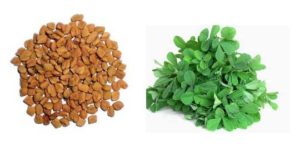 Fenugreek is an annual plant belonging to the family Fabaceae. The leaves and the seeds of the plant are used to flavour various dishes. The plant is commonly used in South Asian cuisine as well as Turkish cuisine, Persian cuisine, Egyptian cuisine, Eritrean and Ethiopian cuisine.
Fenugreek is an annual plant belonging to the family Fabaceae. The leaves and the seeds of the plant are used to flavour various dishes. The plant is commonly used in South Asian cuisine as well as Turkish cuisine, Persian cuisine, Egyptian cuisine, Eritrean and Ethiopian cuisine.
Fenugreek seeds can be used as whole as well as in powdered form for preparing pickles, spice mixes and vegetable dishes as well as dals or lentil soups. It can also be roasted and then used to flavour dishes as roasting the seeds decreases bitterness of the seeds.
Fenugreek leaves can be used in both fresh as well as dried form while the sprouted seeds and microgreens can feature in salads.
The other uses of Fenugreek include:
- Improving Digestive Problems and Cholesterol Levels.
- Decreasing Inflammation inside and outside the Body.
- Improvement of Libido in Men.
Garlic (Rosun/Lahasun)
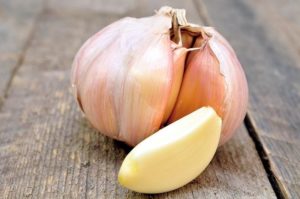 Garlic belongs to the genus Allium, which is the same genus of onion, thus they are closely related. The bulb of garlic, its leaves and flowers are used in various cuisines. It is mainly used as a condiment or a seasoning.
Garlic belongs to the genus Allium, which is the same genus of onion, thus they are closely related. The bulb of garlic, its leaves and flowers are used in various cuisines. It is mainly used as a condiment or a seasoning.
Garlic cloves maybe consumed raw or used to cook in various dishes. It usually has a pungent smell that turns sweet and becomes mellow as the garlic is cooked.
Other parts of the garlic plant that are edible as well include leaves and flowers on the head. These are usually mild in flavour. The garlic leaves can also be used different dishes after stir-frying.
Other ways the garlic can be used is when it is immature then it is sold as ‘green garlic” while the garlic bulbs that have gone past immature stage but have not matured completely are like a garlic “round” that imparts the flavour and aroma of garlic but not the spiciness.
Garlic is widely used in various cuisines. Garlic powder has also gained popularity but it tastes completely different from fresh garlic.
Other uses of garlic include:
- Curing Cold
- Getting Rid of Acne
- Treating Cold Sores
- Treating Athlete’s Foot
- Controlling Pests
Ginger (Ada/Adrak)
Ginger is a kind of flowering plant. The rhizome of the plant is known as ginger root or simply ginger. This is widely used to spice up dishes but it also has many medicinal qualities. Its origins can be tracked back to tropical rainforest in Southern Asia.
The young ginger rhizomes are juicy with a mild taste so they can be consumed by pickling or cooking. Candy can also be made using ginger. Ginger wine is also made from ginger.
The mature ginger rhizomes on the other hand are quite dry and only used to flavour dishes in Indian cuisine as well as Chinese, Korean, Japanese, Vietnamese, and many South Asian cuisines. It can be used to make both vegetarian and non-vegetarian dishes.
Ginger also provides relief from digestive problems like nausea, motion sickness, loss of appetite and pain.
Gram Flour (Besan)
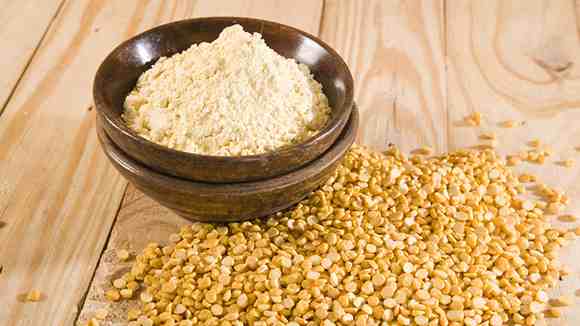 Gram flour is a kind of flour made by grounding a kind of chickpea known as the Bengal gram. It is made by grinding raw or roasted gram beans. The gram flour from raw beans has a bitter taste while the roasted variety has more flavour.
Gram flour is a kind of flour made by grounding a kind of chickpea known as the Bengal gram. It is made by grinding raw or roasted gram beans. The gram flour from raw beans has a bitter taste while the roasted variety has more flavour.
It is quite popular in cuisine of India, Nepali, Sri Lanka, Bangladeshi, Burmese and Pakistani. Some of the dishes that are made using gram flour are Dhokla, Sev and much more.
It is also used in cuisines of:
- Southeast and East Asia
- Southern Europe
- North Africa
Other uses of gram flour include:
- Removal of tan
- Oil reduction
- Preventing pimples and fighting active ones
- Brightening dark arms and neck
- As a body scrub
- Removal of unwanted facial hair.
Mint (Pudina)
 This belongs to a genus of plants from the family Lamiaceae. Mint is basically an aromatic herb that can add flavour to dish in both fresh and dried form.
This belongs to a genus of plants from the family Lamiaceae. Mint is basically an aromatic herb that can add flavour to dish in both fresh and dried form.
Fresh mint is always better than the dried variety if it can be stored. It lends a fresh and sweet flavour to the dish. It is widely used in beverages like tea as well as jellies, syrups, candies and ice cream.
It is also widely used in various cuisines like Middle Eastern cuisine, British cuisine and American cuisine. Mint also enhances flavour of certain alcoholic drinks like mint julep and the mojito
Other uses of mint include:
- Used in antiseptic mouthwashes, chewing gums and other mouth fresheners
- Treats treat stomach ache and chest pains.
- The essential oil from mint is a major ingredient in many cosmetics and used for aromatherapy.
- Mint oil also acts as an insecticide
- Mint enhances bile secretion and improves bile flow that ultimately encourages good digestion
Mustard (Sorshe/Sarson)
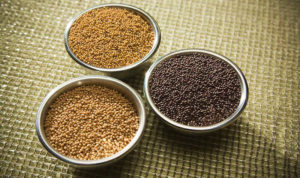 Mustard plants belong to the genera Brassica and Sinapis from the family Brassicaceae. The seeds of this plant are used as spices and can be used to temper various types of dishes like lentil soup or dals. There are basically three types of mustard plants that provide three types of seeds:
Mustard plants belong to the genera Brassica and Sinapis from the family Brassicaceae. The seeds of this plant are used as spices and can be used to temper various types of dishes like lentil soup or dals. There are basically three types of mustard plants that provide three types of seeds:
- Black mustard
- Brown Indian mustard
- White mustard
Grinding the seeds with water, vinegar and/or other liquids create a condiment called Mustard. The greens known as ‘saag’ are also edible once cooked. It can be stir fried to create a vegetarian dish. The seeds on the other hand can be used to add flavour to various dishes or pressed to derive mustard oil.
Some of the other uses of this spice are:
- Relieves a bad congestion
- Relieves back pain and spasms
- Lowers fever by inducing sweating
Nigella Seeds (Kalo Jeere/Kalonji)
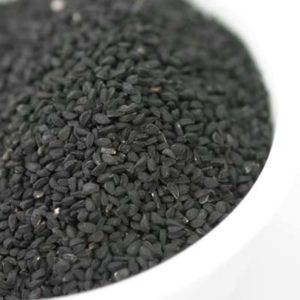 Nigella sativa also known as black cumin is basically an annual flowering plant from the family Ranunculaceae. It is native to south and southwest Asia.
Nigella sativa also known as black cumin is basically an annual flowering plant from the family Ranunculaceae. It is native to south and southwest Asia.
Nigella seeds or black cumin is a popular spice used to temper various dishes of the Indian and Middle Eastern cuisines. The taste of this seed is a combination of different flavours including onions, black pepper and oregano.
They can be used to flavour curries and other vegetarian dishes as well as lentil soups/dals. It is a part of the famous Bengali spice mix – Panch Foran which also has fenugreek seeds, fennel seeds, mustard seeds and cumin seeds.
Some of the other uses of this amazing spice are:
- Treatment for mild hypertension
- Treatment for sore throat
Nutmeg (Jaifal)
 Nutmeg is a spice derived from trees of the genus Myristica. The fruit of this plant provides two kinds of spices, Mace, the coating of the seed and nutmeg, the seed itself.
Nutmeg is a spice derived from trees of the genus Myristica. The fruit of this plant provides two kinds of spices, Mace, the coating of the seed and nutmeg, the seed itself.
Nutmeg has a sweet flavour that needs to be used in powder or grated form. This spice is used predominantly across various cuisines like Indonesian cuisine, Penang cuisine, Indian cuisine, Middle Eastern cuisine, European cuisine, Italian cuisine and many more.
Some of the other uses of this spice are:
- Nutmeg butter derived from the seed can be mixed with other fats and used as an industrial lubricant.
- Used for nausea, diarrhoea, intestinal gas, stomach spasms and pain.
Poppy (Posto/Khus-khus)
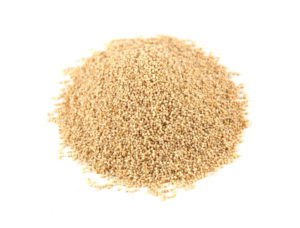 Poppy seed is a kind of oilseed that has various culinary uses. The seeds can be used as a whole or in the ground form as a paste. It can also be pressed to obtain poppy seed oil.
Poppy seed is a kind of oilseed that has various culinary uses. The seeds can be used as a whole or in the ground form as a paste. It can also be pressed to obtain poppy seed oil.
Whole seeds are used widely in cuisines of North America, Europe, India and many more countries where it is legally grown.
Ground Poppy Seeds can be used in dry form or as a paste. Poppy Seed paste made with mustard oil is a delicacy in Bengali cuisine. It can also be used on breads and cakes. It is also used in sweet dishes from India.
Saffron (Kesar)
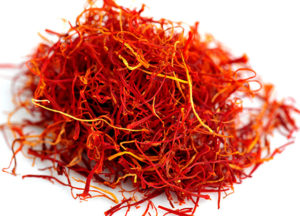 Saffron is the name of a dried spice which is actually the styles and stigmas belonging to the flower of Crocus sativus. It is bright red in colour and is used for seasoning and flavouring dishes. It is considered as one of the most expensive spices in the world.
Saffron is the name of a dried spice which is actually the styles and stigmas belonging to the flower of Crocus sativus. It is bright red in colour and is used for seasoning and flavouring dishes. It is considered as one of the most expensive spices in the world.
It is widely used in various cuisines across the world including Persian, Indian, European, and Arab cuisines. It is used in both savoury and sweet dishes. Saffron lends the dish a yellow-orange hue to the food it is used in.
It also has some other uses like:
- Treatment of asthma, pertussis and cough
- Used as an expectorant
- Used in traditional medicine
Sesame (Til)
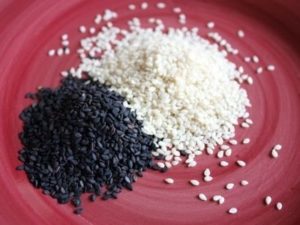 Sesame seed is derived from a flowering plant belonging to the genus Sesamum. It is basically an oilseed that has a nutty flavour and is commonly used in different cuisines across the world. It can be found on top of certain breads like bagels and hamburger buns.
Sesame seed is derived from a flowering plant belonging to the genus Sesamum. It is basically an oilseed that has a nutty flavour and is commonly used in different cuisines across the world. It can be found on top of certain breads like bagels and hamburger buns.
It can also be added to flavour salads and many baked snacks. It is popular in Asian cuisine, African cuisine, Mexican cuisine, Middle-Eastern cuisine, Caribbean cuisine and many more. Sesame Oil is also used in Indian cuisine to enhance the flavour of the dish. The black version is slightly bitter to the palate compared to the naturally white version of sesame which has a more nutty flavour.
Other uses of Sesame are:
- Improves blood pressure
- Guards health of the heart
- Creates a balance in hormone levels
- Helps fight cancer
- Aids in getting rid of fat
Turmeric ( Holud/Haldi)
 Turmeric is a herbaceous perennial plant belonging to the ginger family. The rhizomes are used to flavour different dishes of Bangladesh cuisine, India cuisine, Indonesia cuisine, Iran cuisine and more.
Turmeric is a herbaceous perennial plant belonging to the ginger family. The rhizomes are used to flavour different dishes of Bangladesh cuisine, India cuisine, Indonesia cuisine, Iran cuisine and more.
It is popularly used in curries but it also has applications as a dyeing agent. It is usually used in savoury dishes but some sweet dishes might also have this spice. The most popular form of this spice that is used in various dishes is the dried powder form.
Turmeric leaves can be used in some cuisines to wrap up and cook food. Dried powder form might be the most popular form of turmeric but fresh turmeric is also used in different cuisines like East Asian cuisines as a pickle.
Other uses of Turmeric include treatment of:
- Cancer
- Liver damage
- Diabetes
- Alzheimer’s disease and dementia
Semolina (Suji)
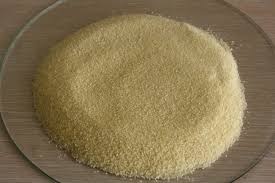 Semolina is mainly derived from wheat but other grains like maize and rice can also produce semolina. It is basically flour that is not very fine. It is basically a kind of middling.
Semolina is mainly derived from wheat but other grains like maize and rice can also produce semolina. It is basically flour that is not very fine. It is basically a kind of middling.
It can be used to make both sweet and savoury dishes. Semolina is widely used across the world in various cuisines like Indian cuisine, German cuisine, North African cuisine, Dutch cuisine, English cuisine and many more.
It is also used extensively in baking to flour surfaces instead of corn meal so that nothing sticks. Semolina might also be added to bread so that it can add a delicious crust to the bread.
Green Gram (Moong)
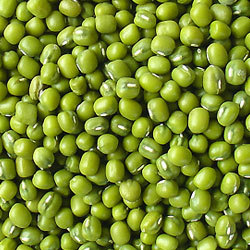 Green gram is a kind of plant that belongs to the legume family. It is also known as mung bean or moong bean. Though it is a kind of lentil but it can be used in both savoury and sweet dishes.
Green gram is a kind of plant that belongs to the legume family. It is also known as mung bean or moong bean. Though it is a kind of lentil but it can be used in both savoury and sweet dishes.
The whole bean can be cooked by boiling them in the water. When the skin if the green gram is removed, split moong beans are actually yellow in colour. Green gram can cooked as it is but the split green gram is just as tasty when prepared properly. From the paste of the green gram, various dishes, both sweet and savoury can be prepared. Not just Indian but it is popular in cuisine of China, Hong Kong, Korea and Philippines.
The moong bean sprouts can be eaten raw as part of a salad. These can also be stir-fried and served as an accompaniment. It features in Chinese cuisine, Vietnamese cuisine, Korean cuisine as well as Malaysian and Peranakan cuisine.
Other benefits include weight control, lowering blood pressure and many more.
Masoor Dal (Moshoor)
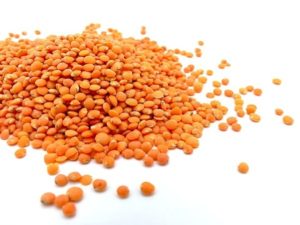 This is a type of lentil that appears brown as a whole but the split dal without the outer covering has an orange colour. South Asian cuisine has various recipes for this kind of lentil and the recipes incorporate the lentil from which the hulls have been removed. The preparation can be enjoyed with rice and roti. Many other stuff like kababs and some other preparations can be used using this.
This is a type of lentil that appears brown as a whole but the split dal without the outer covering has an orange colour. South Asian cuisine has various recipes for this kind of lentil and the recipes incorporate the lentil from which the hulls have been removed. The preparation can be enjoyed with rice and roti. Many other stuff like kababs and some other preparations can be used using this.
Chickpeas (Chana/Chole)
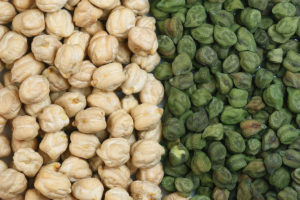 It is a legume that can be found in different varieties like Bengal gram, Garbanzo bean and Egyptian pea.
It is a legume that can be found in different varieties like Bengal gram, Garbanzo bean and Egyptian pea.
Bengal Gram is also known as Desi chana and is smaller and darker with a rough coat while the Garbanzo bean is larger and light colored with a smoother coat. The Chickpeas can be used in various ways but it must be cooked. This legume can be used salads, stews and curries. Dry chickpeas can also be ground up to form chickpea flour. It can also be used an animal feed.
Black Gram (Urad/ Kalo dal/ Kalai Daal/ Biulir Dal)
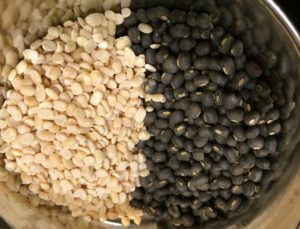 It is a type of lentil that is known as Urad Dal in the Indian subcontinent. This is usually sold as a whole bean; or as the split one which is called White lentil or split black gram lentil due to its white interior and texture. It is quite popular in Punjabi cuisine and South Indian cuisine. It is a major part of the batter for ‘Idli’ and ‘Dosa’. In Punjabi cuisine it can be found in ‘Dal Makhani’ recipe while in Bengal it is found in a preparation called ‘Biulir Dal’.
It is a type of lentil that is known as Urad Dal in the Indian subcontinent. This is usually sold as a whole bean; or as the split one which is called White lentil or split black gram lentil due to its white interior and texture. It is quite popular in Punjabi cuisine and South Indian cuisine. It is a major part of the batter for ‘Idli’ and ‘Dosa’. In Punjabi cuisine it can be found in ‘Dal Makhani’ recipe while in Bengal it is found in a preparation called ‘Biulir Dal’.
Cashew Nuts (Kaju)
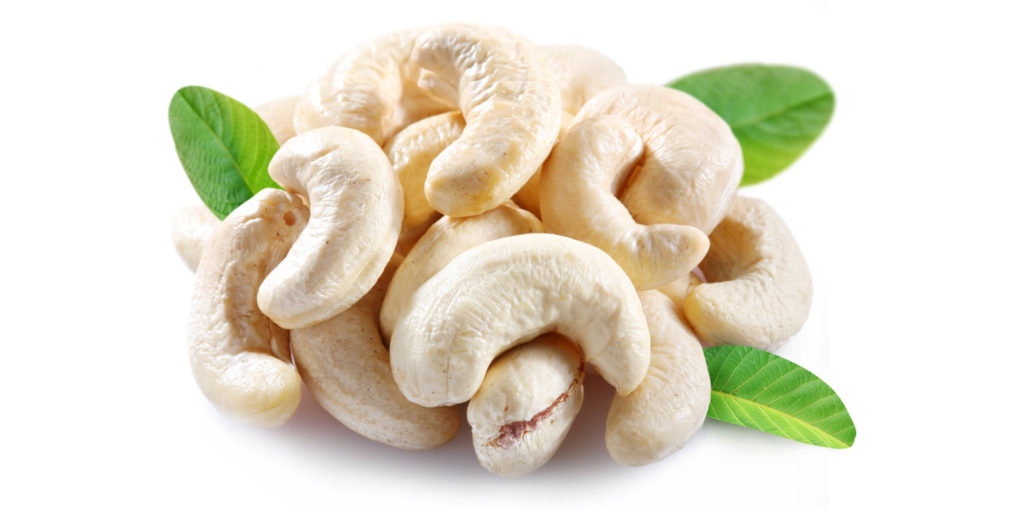 Cashew Nuts are obtained from the Cashew tree that is a tropical evergreen tree.
Cashew Nuts are obtained from the Cashew tree that is a tropical evergreen tree.
It can be used in various ways:
- Can be eaten raw as a snack
- Can be used in recipes
- Can be processed to form cashew butter or cashew cheese
The cashew nut is a common ingredient in Indian cuisine and can be used as a whole nut or as a ground paste. It can also be used in powdered form to prepare various desserts and sweets. It is also popularly used in Thai and Chinese cuisine. The shell of the cashew nut is useful as well. It can be used in lubricants, paints and waterproofing to name some.
Raisins (Kishmish)
 Raisins are basically dehydrated grapes. These have a sweet and sugary taste because only the sweetest grapes are used to make raisins. Grapes are dried up under the sun or in an oven to produce raisins.
Raisins are basically dehydrated grapes. These have a sweet and sugary taste because only the sweetest grapes are used to make raisins. Grapes are dried up under the sun or in an oven to produce raisins.
Some of the different variants of raisins are:
- Green
- Black
- Brown
- Seedless Sultana Raisins
- Golden raisins
- Muscat raisins
It can be eaten raw or used in savoury as well as sweet dishes. It can be in dishes and used to cook, bake and brew dishes and drinks of different cuisines.
It also has some other uses including:
- Relieving constipation and acidosis
- Is beneficial for health of eyes, teeth and bone
- Treats anaemia, fever
- It can also help to gain weight in a healthy way
Cardamom (Elaichi)
 Cardamom is one of the most exotic spices from the land of spices, India. It is known for its pleasant fragrance that is warm and aromatic. This spice is important in both sweet and savoury dishes of Indian cuisine. The flavour is actually locked inside the pods that are full of aromatic seeds. These have been a part of the Indian cuisine for a long time. This ingredient does not only have culinary uses but a plethora of other uses including:
Cardamom is one of the most exotic spices from the land of spices, India. It is known for its pleasant fragrance that is warm and aromatic. This spice is important in both sweet and savoury dishes of Indian cuisine. The flavour is actually locked inside the pods that are full of aromatic seeds. These have been a part of the Indian cuisine for a long time. This ingredient does not only have culinary uses but a plethora of other uses including:
Solves digestion problems like:
- Heartburn
- Intestinal spasms
- Irritable bowel syndrome (IBS)
- Intestinal gas
- Liver and gallbladder complaints
- Loss of appetite
Mace (Javitri)
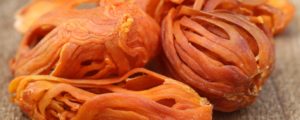 The seed covering of the nutmeg seeds is reddish in colour. This covering is known as mace or javitri. The flavour is quiet similar to nutmeg but mace has a more subtle and delicate flavour. It tends to impart a soft orange hue to the dish it is added to. It has an amazing flavour that imparts an amazing aroma to the dish. It is full of antioxidants, minerals, vitamins and other essential compounds.
The seed covering of the nutmeg seeds is reddish in colour. This covering is known as mace or javitri. The flavour is quiet similar to nutmeg but mace has a more subtle and delicate flavour. It tends to impart a soft orange hue to the dish it is added to. It has an amazing flavour that imparts an amazing aroma to the dish. It is full of antioxidants, minerals, vitamins and other essential compounds.
This spice has many other uses like:
- Contains Anti-Inflammatory Properties
- Keeps Digestive System Healthy
- Boosts Blood Circulation
- Acts as a Stress Buster
- Protects Health of Kidneys
Carom Seeds (Ajwain)
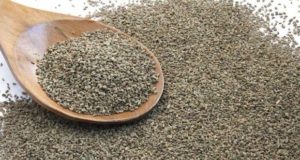 The leaves and the fruit of the Ajwain plant are edible. The fruit of Ajwain is most commonly mistaken to be seeds so it is called Carom or Ajwain seeds. It is also known as bishop’s weed. The flavour of the spice is quite similar to that of anise and oregano. It has a smell similar to thyme with a bitter and pungent taste. These seeds are never consumed raw. Ajwain is usually used in dishes after dry roasting or frying them. Once they are roasted or fried will they be able to develop a subtle and complex aroma. It is majorly used to flavour savoury dishes like lentils. Ajwain also has other uses in treating stomach disorders like indigestion, flatulence and many more
The leaves and the fruit of the Ajwain plant are edible. The fruit of Ajwain is most commonly mistaken to be seeds so it is called Carom or Ajwain seeds. It is also known as bishop’s weed. The flavour of the spice is quite similar to that of anise and oregano. It has a smell similar to thyme with a bitter and pungent taste. These seeds are never consumed raw. Ajwain is usually used in dishes after dry roasting or frying them. Once they are roasted or fried will they be able to develop a subtle and complex aroma. It is majorly used to flavour savoury dishes like lentils. Ajwain also has other uses in treating stomach disorders like indigestion, flatulence and many more
Star Anise
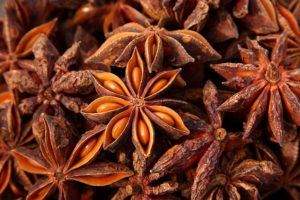 This spice is derived from the star-shaped pericarp of the fruit of Illicium verum. The spice is harvested just before it ripens. It resembles the flavour of Aniseed and can be used for baking, producing liquor and enhancing flavour of meat. It is commonly used in Indian cuisine, Chinese cuisine and many Asian cuisines. It is an essential part of the famous Chinese spice called Five-spice powder. It is used in the recipe of a French wine.
This spice is derived from the star-shaped pericarp of the fruit of Illicium verum. The spice is harvested just before it ripens. It resembles the flavour of Aniseed and can be used for baking, producing liquor and enhancing flavour of meat. It is commonly used in Indian cuisine, Chinese cuisine and many Asian cuisines. It is an essential part of the famous Chinese spice called Five-spice powder. It is used in the recipe of a French wine.
Radhuni
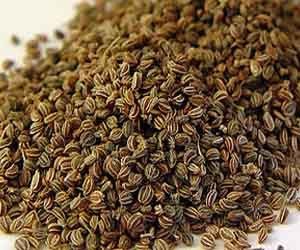 These are the dried fruits of flowering plants belonging to the family Apiaceae. It is commonly used in Bengali cuisine while the fresh leaves are used in cuisine of Thailand. Just like Ajwain, the fruits of this plant are mistaken for seeds. It looks similar to the appearance of celery, ajwain or caraway. This spice has a strong flavour with a smell similar to parsley and taste similar to celery. In Bengali cuisine, it is used to temper the heated oil. Some also use it as a part of a popular Bengali spice mix called Panch Phoron. It can also be used to flavour pickles.
These are the dried fruits of flowering plants belonging to the family Apiaceae. It is commonly used in Bengali cuisine while the fresh leaves are used in cuisine of Thailand. Just like Ajwain, the fruits of this plant are mistaken for seeds. It looks similar to the appearance of celery, ajwain or caraway. This spice has a strong flavour with a smell similar to parsley and taste similar to celery. In Bengali cuisine, it is used to temper the heated oil. Some also use it as a part of a popular Bengali spice mix called Panch Phoron. It can also be used to flavour pickles.
Curry Leaves (Kadi Patta)
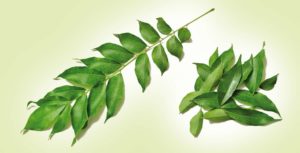 Leaves of the Curry plants are used in cuisines of various regions. It is widely used in cuisines of South and Western India as well as Sri Lankan cuisine. It features in curries and certain chutneys to enhance their flavour. Fresh leaves are the best but dried leaves are flavourful as well but the flavour is a bit subdued.
Leaves of the Curry plants are used in cuisines of various regions. It is widely used in cuisines of South and Western India as well as Sri Lankan cuisine. It features in curries and certain chutneys to enhance their flavour. Fresh leaves are the best but dried leaves are flavourful as well but the flavour is a bit subdued.
Curry Leaves have other medicinal uses as well like:
- Improving heart function
- Fighting infections
- It also revitalizes hair and skin
Vanilla
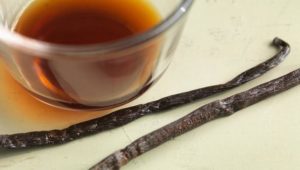 Vanilla is the long and thin pods of a specific orchid that can be used to flavour different dishes. The pods are first cured by drying them in sin and sweating in blankets. Once they shrink up and turn brown from fermentation, the pods can be used for dishes. The pods need to be slit along the middle and then the seeds can be scraped to flavour dishes. Another form of Vanilla that is popularly used in cuisines is the extract that is prepared using the chopped up beans and then softening it by soaking them in alcohol. This helps to draw out the flavour and create an amazing flavourful Vanilla essence.
Vanilla is the long and thin pods of a specific orchid that can be used to flavour different dishes. The pods are first cured by drying them in sin and sweating in blankets. Once they shrink up and turn brown from fermentation, the pods can be used for dishes. The pods need to be slit along the middle and then the seeds can be scraped to flavour dishes. Another form of Vanilla that is popularly used in cuisines is the extract that is prepared using the chopped up beans and then softening it by soaking them in alcohol. This helps to draw out the flavour and create an amazing flavourful Vanilla essence.
Paprika
 It is a common spice that can not only spice up the dish but also to garnish dishes. The powder is made by finely grinding the pods. Colour of the powder ranges from orange to red while the flavour profile ranges from mild to hot. It is mainly used in savoury dishes. Some of the varieties of Paprika include:
It is a common spice that can not only spice up the dish but also to garnish dishes. The powder is made by finely grinding the pods. Colour of the powder ranges from orange to red while the flavour profile ranges from mild to hot. It is mainly used in savoury dishes. Some of the varieties of Paprika include:
- Hungarian paprika: is considered to be of superior quality and the best.
- Pimenton: is made with a kind of Spanish paprika that is created using smoked peppers.
Parsley
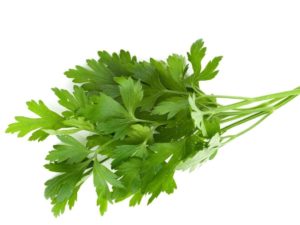 It is a common herb that is quiet versatile with a subtle peppery flavour. It is commonly used in Western style of cooking. This herb can pump up the flavour of sauces and salads. It can also be used as a garnish by sprinkling it over the cooked dish to add flavour and a vibrant green colour to the dish. The different types of Parsley are:
It is a common herb that is quiet versatile with a subtle peppery flavour. It is commonly used in Western style of cooking. This herb can pump up the flavour of sauces and salads. It can also be used as a garnish by sprinkling it over the cooked dish to add flavour and a vibrant green colour to the dish. The different types of Parsley are:
- Flat-leaf or Italian parsley adds an amazing flavour to the cooked dish and has great texture
- Curly parsley is an amazing variety that is best used for garnishing purposes
Rosemary
Rosemary is one a tough and woody herbs that has a pungent flavour. The leaves of the herb are in a shape of a spike and can be used fresh or in dried form. It adds an amazing flavour to soups, stews and sauces. The flavour is quiet strong and so must be used with caution, so add a little at first and add more if needed.
Thyme
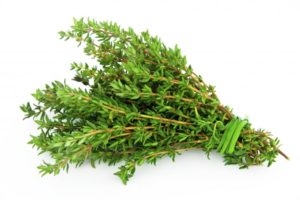 It is a popular herb that is used in both American and European style of dishes. It is a versatile herb that goes well with all kinds of dish, meat, fish, poultry and even vegetarian dishes. Thyme is best used when fresh. Peel off as many leaves as possible by running your fingers along the woody stem. If thyme is young then some of the main stem and offshoot stems might come off but that is not a problem. It can be stored easily in the fridge for a week after wrapping in damp cloth inside a plastic bag.
It is a popular herb that is used in both American and European style of dishes. It is a versatile herb that goes well with all kinds of dish, meat, fish, poultry and even vegetarian dishes. Thyme is best used when fresh. Peel off as many leaves as possible by running your fingers along the woody stem. If thyme is young then some of the main stem and offshoot stems might come off but that is not a problem. It can be stored easily in the fridge for a week after wrapping in damp cloth inside a plastic bag.
Sage
 This herb has a strong flavour so must be added in small amounts so that it does not overpower the dish. Sage in its dry form is a popular ingredient for the Thanksgiving stuffing. It also goes well with pork, beans, potatoes as well as cheese. A classic and popular sauce made using sage is the sage and brown butter sauce. Fresh sage might add another layer of complexity to dishes so use with caution.
This herb has a strong flavour so must be added in small amounts so that it does not overpower the dish. Sage in its dry form is a popular ingredient for the Thanksgiving stuffing. It also goes well with pork, beans, potatoes as well as cheese. A classic and popular sauce made using sage is the sage and brown butter sauce. Fresh sage might add another layer of complexity to dishes so use with caution.
Chives
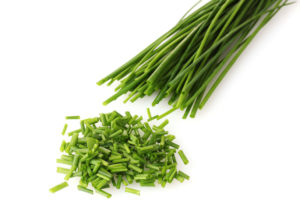 Chives are long slender green coloured herbs that have purple coloured blossoms. These add a flavour that is similar to onions without the bite. When used as a garnish, its green colour and tube-like appearance elevates the look of the dish. Even if you just lay it across the plate as it is, the dish looks elegant. These not only elevate the look of the dish but the flavour as well. The blossoms have a heightened pungent flavour that can be an amazing ingredient in a salad.
Chives are long slender green coloured herbs that have purple coloured blossoms. These add a flavour that is similar to onions without the bite. When used as a garnish, its green colour and tube-like appearance elevates the look of the dish. Even if you just lay it across the plate as it is, the dish looks elegant. These not only elevate the look of the dish but the flavour as well. The blossoms have a heightened pungent flavour that can be an amazing ingredient in a salad.
Dill
 The leaves of the herb have a feathery appearance and lend the dish an amazing anise flavour. It can be used in soups, seafood, salads as well as sauces. The subtle flavour compliments various fish and shellfish dishes. Cuisines of Europe and Middle East incorporate this herb quite often in various recipes. Fresh dill can be stored in the refrigerator for nearly 3 days.
The leaves of the herb have a feathery appearance and lend the dish an amazing anise flavour. It can be used in soups, seafood, salads as well as sauces. The subtle flavour compliments various fish and shellfish dishes. Cuisines of Europe and Middle East incorporate this herb quite often in various recipes. Fresh dill can be stored in the refrigerator for nearly 3 days.
Oregano
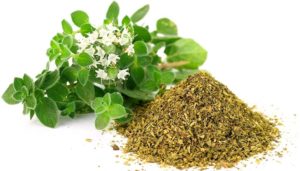 This herb is more commonly found in its dried form than the fresh one. While using fresh oregano remember to use half the amount as the flavour would much more pronounced when the herb is fresh. It has a pungent flavour and is used in Mediterranean and Mexican cuisines. It can sometimes be used as substitute for marjoram.
This herb is more commonly found in its dried form than the fresh one. While using fresh oregano remember to use half the amount as the flavour would much more pronounced when the herb is fresh. It has a pungent flavour and is used in Mediterranean and Mexican cuisines. It can sometimes be used as substitute for marjoram.
Almonds
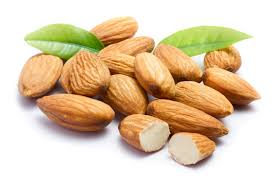 Almond fruit belongs to a tress that can be found in parts of Middle East and South Asia. The Almond or ‘badam’, as it is commonly referred to in India, is the seed of this tree but it is not a true nut. The fruit from which almond is derived has an outer hull along with a hard shell in which the white edible seed is encased. Almonds can be found in both shelled and unshelled form. Almond can be eaten raw and is very good for health. It can also be added as an ingredient in various dishes, both savoury and sweet. Almond oil can also be extracted from almonds and is extremely good for your skin and hair.
Almond fruit belongs to a tress that can be found in parts of Middle East and South Asia. The Almond or ‘badam’, as it is commonly referred to in India, is the seed of this tree but it is not a true nut. The fruit from which almond is derived has an outer hull along with a hard shell in which the white edible seed is encased. Almonds can be found in both shelled and unshelled form. Almond can be eaten raw and is very good for health. It can also be added as an ingredient in various dishes, both savoury and sweet. Almond oil can also be extracted from almonds and is extremely good for your skin and hair.
The many benefits of almonds include:
- Promoting glowing skin
- Treating acne, blackheads and whiteheads
- Reducing dark circles
- Dandruff reduction
- Enhancing digestive health
- Regulating blood pressure
- Treating Diabetes
Pecans
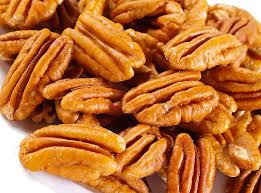 Pecans have a seed that has a buttery flavour that is quite rich. The seeds are edible and referred to as Pecan nuts. These can be eaten raw or used as an ingredient in a dish. Pecan pie is a traditional Southern dish that is delicious and captures the flavour of Pecans. It also can be used to prepare praline and other delectable desserts. Roasted pecans have an amazing aroma and bring another layer of crunchy texture to the dish. Chop up the roasted nuts and use as a sprinkle on desserts and other dishes.
Pecans have a seed that has a buttery flavour that is quite rich. The seeds are edible and referred to as Pecan nuts. These can be eaten raw or used as an ingredient in a dish. Pecan pie is a traditional Southern dish that is delicious and captures the flavour of Pecans. It also can be used to prepare praline and other delectable desserts. Roasted pecans have an amazing aroma and bring another layer of crunchy texture to the dish. Chop up the roasted nuts and use as a sprinkle on desserts and other dishes.
It can also be used for other functions:
- Improves Health of Heart
- Helps in Weight Loss
- Prevention of Cancer
- Improves Bone Health
Macadamia nuts
 Macadamia Tree is popular for the fruit from which the macadamia nuts are derived. About seven species of Macadamia trees grow all around the world but nuts of only two species are edible. The two types of nuts produced from these two species are:
Macadamia Tree is popular for the fruit from which the macadamia nuts are derived. About seven species of Macadamia trees grow all around the world but nuts of only two species are edible. The two types of nuts produced from these two species are:
- Smooth-shelled nuts
- Rough-shelled nuts
Macadamia nuts also have various other functions:
- Reducing cholesterol levels
- Protection against diseases and some types of cancer like breast, cervical, lung, prostate, and stomach cancer
- Enhances fat metabolism that leads at a reduction in storage of fat
- Health of hair, nails and skin is maintained
Walnuts
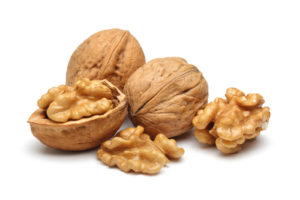 Walnut tree has round fruits that have a single seed. Once the fruit has completely ripened the fruits are opened up and the seed is removed. Once the husk is removed, the wrinkly shell becomes visible and the actual walnut kernel is enclosed within it. It usually has two parts within a brown coloured seed coat that is full of antioxidants. The antioxidant content prevents the seed from going rancid. Walnuts can be eaten raw and in different cuisines like Iranian cuisine. Walnut oil is another product derived from the walnuts that can be used in salad dressings.
Walnut tree has round fruits that have a single seed. Once the fruit has completely ripened the fruits are opened up and the seed is removed. Once the husk is removed, the wrinkly shell becomes visible and the actual walnut kernel is enclosed within it. It usually has two parts within a brown coloured seed coat that is full of antioxidants. The antioxidant content prevents the seed from going rancid. Walnuts can be eaten raw and in different cuisines like Iranian cuisine. Walnut oil is another product derived from the walnuts that can be used in salad dressings.
Walnuts have other health benefits as well:
- Beneficial for the heart
- Improvement in the immune system
- Enhanced Brain Health
- Improved Bone Health
- Promotes better sleep and reduces stress
Pistachio
 Pistachio tress has green coloured nuts that are enclosed within a shell. It is great in the raw form but can be used to coat meat and used in various recipes. It is commonly used in sweet as well as savoury dishes. Pistachio pastry, cookies and cakes have been a popular for a long time but pistachio coated lamb chops are scrumptious. The nuts have low calorie content but a high nutritional value, which makes them a great snack for children and adults.
Pistachio tress has green coloured nuts that are enclosed within a shell. It is great in the raw form but can be used to coat meat and used in various recipes. It is commonly used in sweet as well as savoury dishes. Pistachio pastry, cookies and cakes have been a popular for a long time but pistachio coated lamb chops are scrumptious. The nuts have low calorie content but a high nutritional value, which makes them a great snack for children and adults.
The nuts have other health benefits like:
- Maintaining a healthy heart
- Aiding in weight management
- Providing protection against diabetes and hypertension
- Improvement in digestion
Hazelnuts
 Hazelnut is the kernel of the seed of the Hazel plant. It can be used wither in its raw form or roasted form. The nut can be grounded and turned into a paste to prepare a delectable dish. The nuts have a slight sweet taste and its outer skin needs to be removed before using it in a recipe. It goes really well with chocolate recipes. Hazelnut coffee and Nutella are popular preparations that include hazelnut in the recipe.
Hazelnut is the kernel of the seed of the Hazel plant. It can be used wither in its raw form or roasted form. The nut can be grounded and turned into a paste to prepare a delectable dish. The nuts have a slight sweet taste and its outer skin needs to be removed before using it in a recipe. It goes really well with chocolate recipes. Hazelnut coffee and Nutella are popular preparations that include hazelnut in the recipe.
It is great for your health as well. The benefits include:
- Aids in weight reduction
- Promotes a healthy heart
- Reduces risk of cancer
- Improves skin, bone health and digestion as well
Peanuts
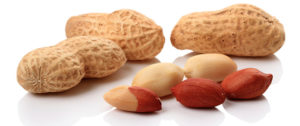 Warm and crunchy peanuts always help you to welcome the cold weather of winter with open arm. It has various names like groundnut, monkey nut and many more. Peanuts are part of a legume family so it is not a real nut. It is classified as a nut as it has properties of a true nut like almonds. Peanuts are enclosed in a pod that becomes wrinkled and pale in colour once they dry up. The pods have around two to three kernels. The seeds have a thin brown coloured covering. Peanuts can be eaten raw or in the roasted form. The roasted form can be salted or roasted.
Warm and crunchy peanuts always help you to welcome the cold weather of winter with open arm. It has various names like groundnut, monkey nut and many more. Peanuts are part of a legume family so it is not a real nut. It is classified as a nut as it has properties of a true nut like almonds. Peanuts are enclosed in a pod that becomes wrinkled and pale in colour once they dry up. The pods have around two to three kernels. The seeds have a thin brown coloured covering. Peanuts can be eaten raw or in the roasted form. The roasted form can be salted or roasted.
- Reduces levels of bad cholesterol while increasing good cholesterol
- Fights Stomach Cancer
- Fights against Heart Diseases and Nerves Diseases
Dates
 Dates are the sweet fruit of a flowering plant that belongs in the palm family, Arecaceae. The fruits maybe eaten in its normal form or might be dried up but dates remain delicious. The pit might be removed and filled with other nuts and cheese like walnuts, candied orange, pecans, marzipan or even cream cheese. Dates can be chopped up and added to various sweet and savoury dishes.
Dates are the sweet fruit of a flowering plant that belongs in the palm family, Arecaceae. The fruits maybe eaten in its normal form or might be dried up but dates remain delicious. The pit might be removed and filled with other nuts and cheese like walnuts, candied orange, pecans, marzipan or even cream cheese. Dates can be chopped up and added to various sweet and savoury dishes.
It has many health benefits like:
- Lowering level of bad cholesterol
- Improving bone health
- Strengthening the nervous system
- Promoting digestion
Prunes
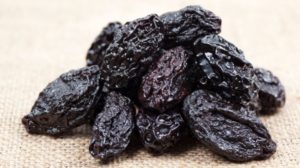 It is one of the most delicious dried fruit. A prune is basically a dried plum fruit. The plums that are dried up to make prunes are different from the plums that are cultivated to consume fresh. The plums that can be dried to form prunes have pits that can be easily removed. Prunes can be used in both sweet and savoury dishes. Stewed prunes can be used to form compote that is a popular dessert.
It is one of the most delicious dried fruit. A prune is basically a dried plum fruit. The plums that are dried up to make prunes are different from the plums that are cultivated to consume fresh. The plums that can be dried to form prunes have pits that can be easily removed. Prunes can be used in both sweet and savoury dishes. Stewed prunes can be used to form compote that is a popular dessert.
It also has various health benefits including:
- Vision improvement
- Reduces heart disease risk
- Relieves constipation
- Great for skin
- Improved health of hair
Dried Apricot
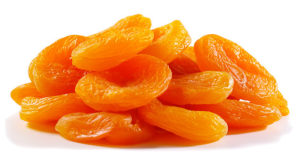 Dried apricot is another delicious dried fruit. Both small and large apricots can be dried to form the dry fruit. The smaller apricots can be dried as a whole while the larger varieties are halved and then dried without the kernel. It can be used to make a puree or in the cereals for breakfast. It goes great when used in milkshakes, salads and other dishes.
Dried apricot is another delicious dried fruit. Both small and large apricots can be dried to form the dry fruit. The smaller apricots can be dried as a whole while the larger varieties are halved and then dried without the kernel. It can be used to make a puree or in the cereals for breakfast. It goes great when used in milkshakes, salads and other dishes.
It also has a high nutritious value thus the dried apricots have some health benefits like:
- Relieves constipation
- Fights Anaemia
- Improvement in digestion
- Good for the skin
- Improves eyesight





